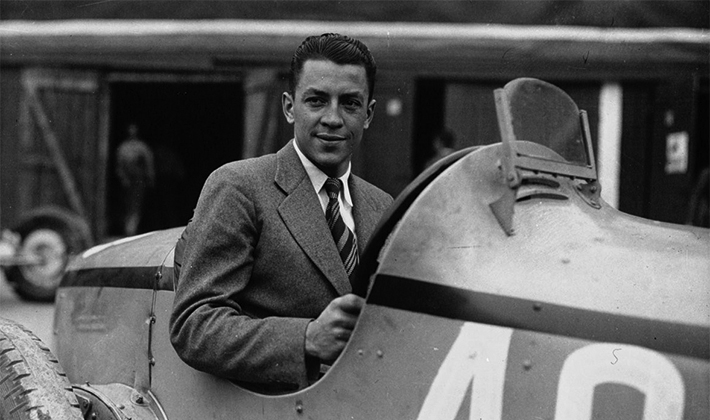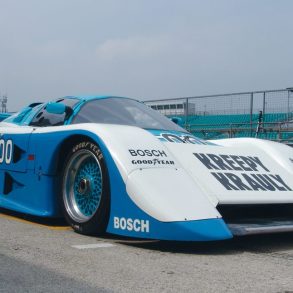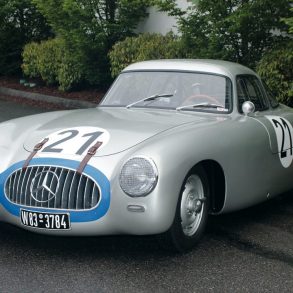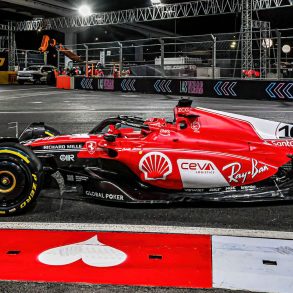Jean-Pierre Wimille Biography
Jean-Pierre Wimille was born in Paris, in 1908. His father, Auguste Wimille, was motoring correspondent for the Petit Parisien newspaper and later the Paris edition of the New York Herald under James Gordon Bennett. It would not be an exaggeration that Wimille grew up steeped in the history of turn of the century motorsports.
Surprisingly he did not get his first car, a three-wheeled Morgan derivative until he reached the age of 20. After duly wrecking his first car it was replaced by a 1500cc Bugatti. He made his Grand Prix debut in 1930, at the French Grand Prix in Pau but mechanical trouble forced him to retire. His appetite now wetted he resolved to continue racing and the next year saw him finish 2nd in the monte Carlo Rally. Except for 2 victories in 1932, Oran and Lorraine, and the GP of Algeria in 1934 he was handicapped by the growing lack of a competitive Bugatti Grand Prix car.
In 1935 at the Spanish Grand Prix an incident happened that would remain with the Frenchman for the rest of his life. Achille Varzi, the great Italian driver who was at that time driving for Auto Union was in the pits arguing with his team manager. His seat was occupied by another driver and the Italian was having none of it. Finally the manager flagged in the offending driver and Varzi, with a Camel firmly in the corner of his mouth, leaped into the Auto Union and left the pit in a cloud of tire smoke. Breaking the lap record in the process Varzi passed Wimille who rashly attempted to stay in the Italian’s wake. In so doing Wimille was able to finish 4th behind three Mercedes but ahead of Rosemeyer’s Auto Union. Afterwards he would exclaim to his friends that,
“I have just learned, in a few laps following Varzi, more than all my other races put together ever taught me!”
With the domination of the German teams in the latter half of the pre-war decade he concentrated on sports cars where he had more success. His best results were winning the French Grand Prix of 1936 which was limited to sports cars and then the 24 Hours of LeMans twice in 1937 and 39. While resigned to driving a Type 59 Bugatti, Wimille still longed to race a competitive car in a real Grand Prix. That opportunity almost came when he was reputedly offered a drive for Auto Union but decided to turn it down for political reasons, still he was impressed with the car’s advanced technology. He was particularly enamored with the Auto Union’s all-independent suspension attached to an torsionally rigid frame. Up to that time he had also never driven a true monoposto and even the far forward driving position did not seem to be a problem.
When war came he joined the French Resistance, at one point just escaping capture by the Gestapo when he jumped from a window and hid in a nearby stream. Later he served as a pilot under Francois Sommer, brother of fellow racer Raymond Sommer.
After the war a more mature Wimille sought tp re-start his career as soon as possible. That opportunity came at a series of races held at the Bois de Boulogne, Paris on 9 September 1945. One of the races, the Coupe des Prisonniers saw a late entrant in the form of Jean-Pierre Wimille and a unique 4.7-litre Bugatti sprint car. Arriving too late for practice he was forced to start from the rear of the grid. Unfortunately for the others it wasn’t far enough back as he soon charged through the field to take the victory, racing had returned to Europe. His driving, once hot headed and prone to accident was now recognized as second to none. He became a hero to countless up and coming drivers including no less than Fangio himself.
Desperate to make up for the lost years he entered every event possible. Practicing for a minor event in South America he was either blinded by the sun or swerved to avoid spectators which in either case caused him to crash fatally, depriving the world of its first true World Champion when the title was instituted in 1950.
It also may have deprived France of a car of the same name. At the 1948 Salon de l’Automobile in Paris Wimille presented what he proposed was a car for the future, today. The staggered-three seater mid-engined fast touring car was inspired by the pre-war Auto Union he had tested back in the thirties and constructed with help from associates in the aircraft industry. Eventually a tie-up with Ford of France seemed to clear the way for the project to move forward only to lose steam upon the death of its namesake.
Victories
1945 Bois de Boulogne, 1947 Switzerland, 1947 Belgium, 1948 France, 1948 Italy



























